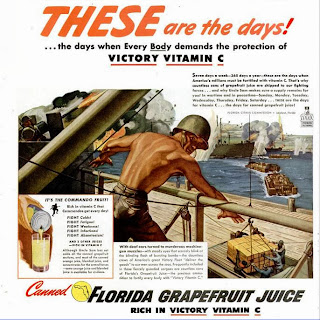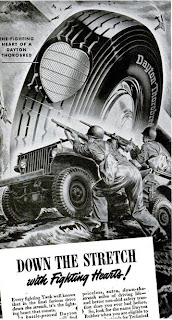The inimitable Frederick Russell Burnham had a life so extraordinarily badass that I struggle to believe it. It really reads like wild pulp magazine, one where the reader would be expected to regard the events as exciting, yet implausible. But Burnham's life was exceptionally plausible, and exciting it damn sure was. Audiences in the early 20th century would most likely have been familiar with him; he was good friends with President Theodore Roosevelt, and his international exploits were widely reported. But, somehow, his legacy has not been sustained in the public memory, which is a damn shame because his life is more interesting than 99.9% of Hollywood scripts (I'm lookin' at you, Lone Ranger).
Frederick Russell Burnham was born on a Sioux Indian Reservation in Minnesota in 1861 to frontier missionary parents. Keep in mind that the Minnesota that Burnham was born to was a wild place, a far cry from the placid, bucolic scenery that defines it today. Less than a year after he was born, a band of Sioux Indians, infuriated at repeated treaty violations by American Indian Agents, went on a rampage in the Dakota and Minnesota territories, killing up to 500 white settlers. Burnham's own family barely avoided annihilation, with Burnham being saved when his mother hid him alone in a basket of corn husks in a corn field during an attack by the Sioux. After the Sioux had been repelled, Burnham's mother found their house burned to the ground, but the infant Burnham was fast asleep in the basket. It was in the fires of this wild frontier that Burnham was brought up. Living in close proximity to the Sioux, he learned their customs and ways in a manner few European Americans ever dared to in his era. He was uniquely disposed to be more connected to the land and perceptive to the natural world, which would serve him in his adult life.
Settlers in Minnesota seeking refuge from Sioux attacks in 1862
By the age of 14, Burnham was supporting himself in the American West, working a variety of odd jobs. The Wild West truly lived up to its moniker in this era, and Burnham found himself in a host of conflicts and nearly lost his life and multiple incidents, most notably the Pleasant Valley War. This local conflict in Arizona was emblematic of a variety of range wars fought throughout the American West during this era, where conflicts between competing ranchers and prospectors often erupting into clan like conflicts. Burnham had the misfortune of being caught up in this violent affair due to loyalty to his employer, a sheep herder in the Pleasant Valley area of Arizona. Burnham himself narrowly avoided death, while most of the principal actors in this conflict were eventually killed in an example of ruthless tit-for-tat frontier violence. This period of itinerant work on the frontier hardened Burnham, and although he was slightly built at 5'4", his tracker skills and rugged looks made him a dashing character (basically, a 19th century Tom Cruise, but with grey-blue eyes).
A young Burnham circa his involvement in the Pleasant Valley War
After a period of working as a tracker for the U.S. Army in its conflicts with the Apache, Burnham was beginning to feel restless. The West was becoming smaller, railroads had allowed massive and rapid transportation to even the most far flung locations, and with the railroads came civilization, a prospect that did not sit well with the man who was raised on a Sioux reservation. In other words, the West was becoming too tame. Burnham then set his eyes on the a place that Western civilization was just beginning to make inroads: Africa.
In the late 1800's, all of the major European powers were scrambling to snatch up any scrap of Africa they set their imperial aspirations upon. By the end of the century, Ethiopia stood alone as the only part of Africa not under European control. It was during this great enterprise that Burnham arrived in Africa in 1893 with his young family, which by then consisted of his wife Blanche and their eventual three children. Settling in the British controlled Southern Africa, Burnham offered his superlative tracking skills to the imperial powers that be, and they were eager to use them. It was during the Anglo conquest of Matabeleland (in modern day Zimbabwe) that Burnham began to cement his legacy. Burnham's scouting exploits were legendary, and in one of the most famous incidents of the war Burnham used his tracking skills to track down the main chief of the Matabele tribe, an eminent belligerent in the war, and assassinated him, skillfully avoiding capture by the chief's many guards in the process. Burnham's considerable skill were put to the ultimate test in the war in Matabeleland, which was far from a foregone conclusion, with the Anglo settlers being far outnumbered and often cutoff from resupply and reinforcement.
Burnham on patrol in Matebeleland
Perhaps Frederick Russell Burnham's most enduring legacy is the impact he had on the early Boy Scouts Movement. His time scouting in Matabeleland brought him in contact with Robert Baden-Powell, a British scout employed by the British Army. In their hunt for the Matabele chief, Burnham taught Baden-Powell his woodcraft skills. He left such an impression on Baden-Powell that the British soldier was inspired to organize the nascent Boy Scout Movement, the progenitor of modern scouting movements around the world, including the Boy Scouts of America. Burnham would remain intimately involved with the early days of the Scouting Movement.
Robert Baden-Powell, father of the Scout Movement
Burnham eventually found great wealth by striking gold on private land he owned in Northern California, and he died comfortably at the age of 86, spending his last years devoted to causes of conservation and scouting. Everyone who met him said that he was conspicuously moderate, seldom speaking of his many adventures. But if there ever was man who had the right to brag from time to time in his old age, his eyes brimming with the memories of adventures done and victories won, it was Frederick Russell Burnham
















